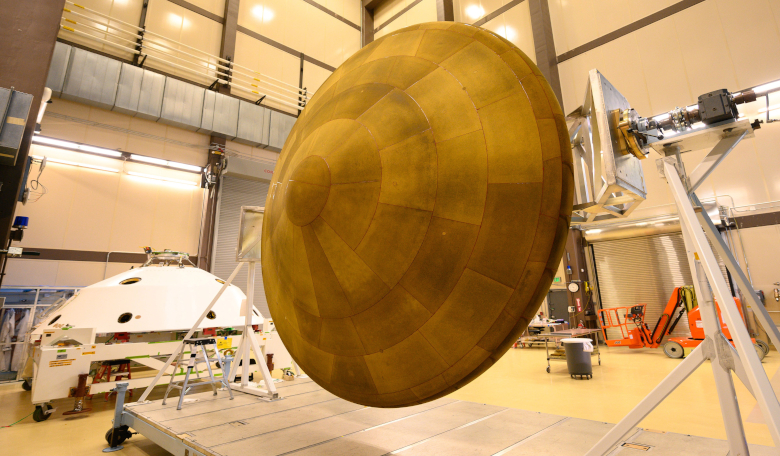When NASA’s Mars 2020 rover reaches the “peak heating” phase of its descent through the Martian atmosphere, its ablator, or heat shield outer coating, burning away by design at temperatures reaching 2,100 degrees Celsius, Neil Tice hopes he can be where the action is on Earth: at the Jet Propulsion Laboratory in California, home of the rovers.
He’ll know a parachute is about to deploy and that the two halves of the rover’s aeroshell, which has protected it throughout its flight, are close to separating — that the heat shield is supposed to fall away. If that happens, he’ll have done his part.
“If we make it to that point, that’s the mission success event,” says Tice, Lockheed Martin’s programme manager over the production of the Mars 2020 aeroshell, both the heat shield, or lower section, in terms of the entry orientation, as well as the back shell, or upper section.
Like everyone else working on NASA’s next robotic mission to Mars, and anxiously awaiting some good news at JPL, Tice won’t know whether the landing succeeded for several minutes after it all goes down, so to speak. But that’s nothing new. He just went through a similar ordeal during the descent of NASA’s InSight probe to Mars’ surface in 2018, including the time lag for confirmation of a successful landing to travel from there to here.
This descent, however, will look less like InSight’s than that of the Curiosity rover in 2012. While the Mars 2020 heat shield appears nearly identical to Curiosity’s, and matches its 4.5 metre girth for a planetary mission record, Lockheed Martin has actually strengthened the aluminum-honeycomb-supported structure in places, partly to account for a rover that’s 150 kilograms heavier, said Tice, in an interview for ROOM.
Lockheed Martin built the aeroshell at its factory in Littleton, Colorado. The company has made the aeroshells for all of NASA’s Mars landing missions, which began with the Viking missions in the 1970s.
A US Air Force transport plane flew the new aeroshell to NASA’s Kennedy Space Center in Florida for delivery on 12 December. The mission is scheduled to launch from Florida in July 2020, during a brief window of shorter flight times to Mars, and to land in February 2021.
The 3 metre long rover will navigate Mars’ 45 kilometre wide Jezero Crater, once a river delta, examining the terrain with instruments to detect the mineral content of the surface, and possibly any signs of past life, plus a ground-penetrating radar to map what lies beneath.
NASA intends for the rover to collect samples from the surface and stash them in a cache in hopes of bringing the Martian materials back to Earth in the future.
An article giving a more detailed look at aeroshell technology is included in the latest edition of ROOM (Winter 2019/20 #22) available now: https://room.eu.com/subscribe











